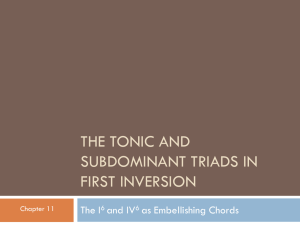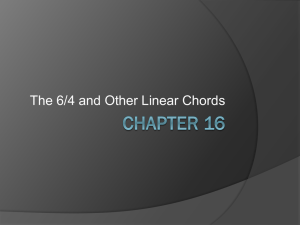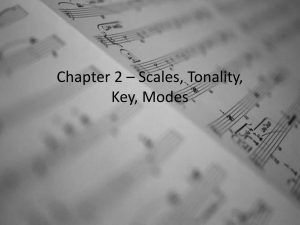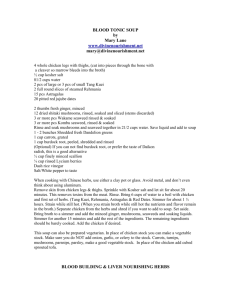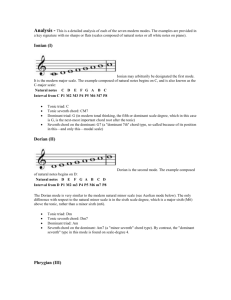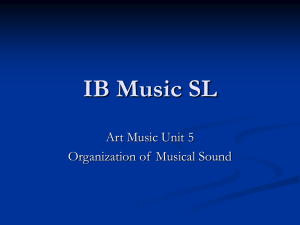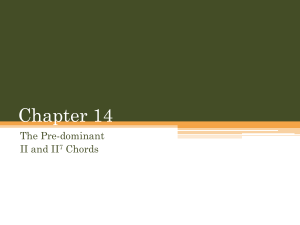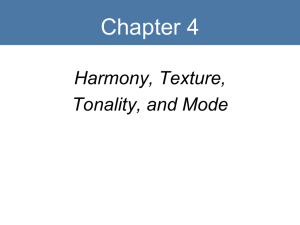Chapter 10
advertisement
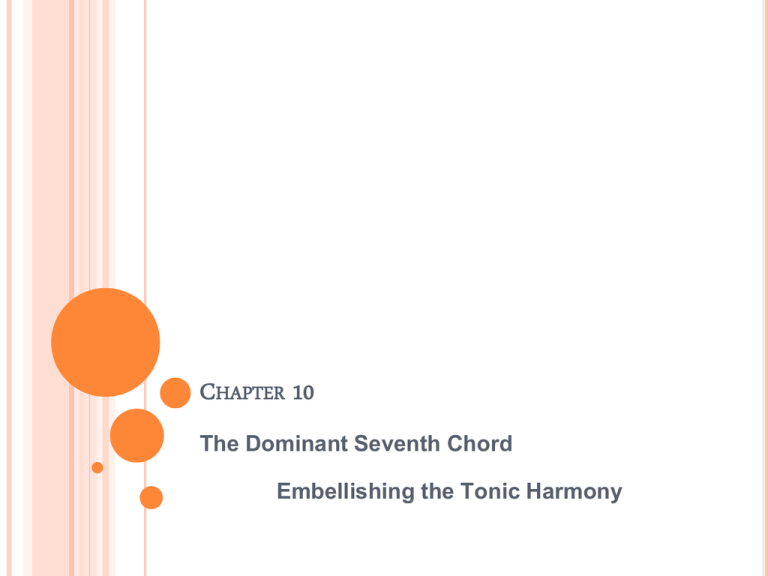
CHAPTER 10 The Dominant Seventh Chord Embellishing the Tonic Harmony DOMINANT SEVENTH IN ROOT POSITION – V7 on ^5 Major Triad + minor 7th above root (Mm7) Manifests itself as Major in both Major & minor keys Frequent substitute for V – intensifies resolution to I Must be ‘complete’ in root position Built CHORDAL RESOLUTION Seventh resolves stepwise downward: ^4 - ^3 Please resolve the TRITONE d5? – interval of a third A4? – interval of a sixth The third (leading tone of I) resolves to tonic Alto or Tenor – downward to dominant ^7-^5 Do not add a passing tone (7-(6)-5) = //5 w/another part Soprano – upward to tonic ^7-^8 COMPLETE VS. INCOMPLETE A Great Rule of Thumb Incomplete – Complete Complete – Incomplete Eliminates parallels fifths Incomplete V7 Remove the 5th; double the root Complete V7 = Incomplete I Results in a tripled root Can only appear at cadences The root and the seventh must never go to ^3 in tonic = direct octaves “So easy even a cat can do it!” -Dexter Don’t trust the dog! THE CADENTIAL DOMINANT SEVENTH Immediately precedes tonic in an authentic cadence Rarely appears at a half cadence which prefers V Seventh may be approached by passing tone, neighbor tone, appoggiatura, or suspension Rules regarding Complete – Incomplete (or vice versa) still apply ARPEGGIATED TONIC PROLONGATION WITHIN THE PHRASE Tonic tonality is prolonged or extended prior to the cadential formula Facilitated through choral arpeggiation or embellishing passing and neighbor tones When doing a voice-leading reduction with arpeggiated notes, be sure to choose essential notes that make the smoothest connection to the next harmony PROLONGATION OF TONIC HARMONY USING EMBELLISHING CHORDS Determining whether chords within a phrase have essential (primary) function or embellishing (secondary) function Judgments are based on the context of a particular passage Secondary chords may prolong the tonic harmony via V, V7 , or even IV Example 10.10 – dominant triads functioning as embellishing or linear chords by passing & neighboring motion consonant passing and neighboring chords Ex. 10.10 V AS AN EMBELLISHING CHORD TO I The dominant is frequently used to embellish tonic either by passing or neighboring motion. Ex. 10.11 • The embellishing V in the first measure functions in a passing capacity V7 AS AN EMBELLISHING CHORD TO I Ex. 10.12 shows an embellishing and cadential V7 to I • B – C# - D comprise the melodic line • F# acts as an inverted pedal tone
